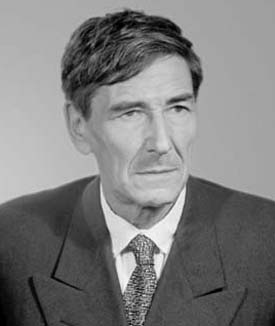

تاريخ الرياضيات

الاعداد و نظريتها

تاريخ التحليل

تار يخ الجبر

الهندسة و التبلوجي


الرياضيات في الحضارات المختلفة

العربية

اليونانية

البابلية

الصينية

المايا

المصرية

الهندية


الرياضيات المتقطعة

المنطق

اسس الرياضيات

فلسفة الرياضيات

مواضيع عامة في المنطق


الجبر

الجبر الخطي

الجبر المجرد

الجبر البولياني

مواضيع عامة في الجبر

الضبابية

نظرية المجموعات

نظرية الزمر

نظرية الحلقات والحقول

نظرية الاعداد

نظرية الفئات

حساب المتجهات

المتتاليات-المتسلسلات

المصفوفات و نظريتها

المثلثات


الهندسة

الهندسة المستوية

الهندسة غير المستوية

مواضيع عامة في الهندسة

التفاضل و التكامل


المعادلات التفاضلية و التكاملية

معادلات تفاضلية

معادلات تكاملية

مواضيع عامة في المعادلات


التحليل

التحليل العددي

التحليل العقدي

التحليل الدالي

مواضيع عامة في التحليل

التحليل الحقيقي

التبلوجيا

نظرية الالعاب

الاحتمالات و الاحصاء

نظرية التحكم

بحوث العمليات

نظرية الكم

الشفرات

الرياضيات التطبيقية

نظريات ومبرهنات


علماء الرياضيات

500AD

500-1499

1000to1499

1500to1599

1600to1649

1650to1699

1700to1749

1750to1779

1780to1799

1800to1819

1820to1829

1830to1839

1840to1849

1850to1859

1860to1864

1865to1869

1870to1874

1875to1879

1880to1884

1885to1889

1890to1894

1895to1899

1900to1904

1905to1909

1910to1914

1915to1919

1920to1924

1925to1929

1930to1939

1940to the present

علماء الرياضيات

الرياضيات في العلوم الاخرى

بحوث و اطاريح جامعية

هل تعلم

طرائق التدريس

الرياضيات العامة

نظرية البيان
Petr Sergeevich Novikov
المؤلف:
S Adian
المصدر:
Biography in Dictionary of Scientific Biography
الجزء والصفحة:
...
26-9-2017
651
Died: 9 January 1975 in Moscow, Russia

Petr Sergeevich Novikov was the son of Sergei Novikov, a Moscow merchant, and Alexandra Novikov. He attended school in Moscow then, in September 1919, he entered the Faculty of Physics and Mathematics at Moscow University. However, even before Novikov entered university, the Russian nation had been plunged into civil war. The Red Army had been formed in February 1918 with Trotsky as its leader. The Red Army opposed the White Army formed of anticommunists led by former imperial officers. In the spring of 1920, with the civil war still raging, Novikov joined the Red Army. He served with this army until July 1922 when he returned to Moscow University to complete his studies.
He graduated in 1925 then, remaining at Moscow University, he undertook research under Luzin's supervision. Novikov graduated in 1929 and then taught at the Moscow Chemical Technology Institute until he joined the Department of Real Function Theory at the Steklov Institute in 1934. He was awarded his doctorate in 1935 and, in 1939, he was promoted to full professor. Novikov married Lyudmila Vsevolodovna Keldysh in 1935. They had five children; one of their sons Sergei Novikov was awarded a Fields Medal in 1970.
Novikov headed the Department of Analysis at Moscow State Teachers Training Institute from 1944. In 1957 Novikov set up a new department at the Steklov Institute, namely the Department of Mathematical Logic, and he was appointed as the first head of that department. He held the two posts, one at the Moscow State Teachers Training Institute and the other at the Steklov Institute, until he retired in 1972 and 1973 respectively.
After early work on set theory, influenced by Luzin and his school, he began to publish results in mathematical physics from 1938. Perhaps his most fundamental result in this area was that [1]:-
... any two solids having the same constant density must coincide if they both are star-shaped relative to a common point and have the same external gravitational potential.
He began to study mathematical logic and the theory of algorithms just before 1940. He studied consistency of arithmetic, proving that formal arithmetic with recursive definitions is consistent. He also examined the consistency of certain propositions in Gödel's system of axiomatic set theory.
Novikov showed, in 1952, that the word problem for groups is insoluble. The word problem asks the fundamental question of whether there is an algorithm to determine whether a word in a group given by a presentation consisting of a finite number of generators and relations is trivial. The problem was first posed by Dehn in 1912 and Novikov was able to show that no such algorithm exists in general. Research into questions of this type is still of major importance in combinatorial group theory. Novikov was awarded the Lenin Prize in 1957 for this outstanding piece of work. In fact Boone published another proof of this result in 1957, the same year that Novikov received his prize.
The word problem was not the only problem of major importance in combinatorial group theory which Novikov solved. Jointly with Adian he showed that the problem of the finiteness of periodic groups proposed by Burnside in 1902 had a negative solution. Although in 1959 Novikov announced that for every n > 71 there exists a finitely generated infinite group with every element of order dividing n, his proof was not quite correct.
Let us state the problem more precisely. The Burnside problem asks whether, for fixed d and n, the group B(d, n) having d generators and in which every element x satisfies xn = 1, is finite. Novikov's argument of 1959 was correct in general terms but the details were not, and in putting the arguments right it was found that one required larger values of n. In 1968 Novikov and Adian jointly published a proof B(d, n) is infinite for every d > 1 and every n > 4380. They continued to work on improving the result and, in 1979, published a book The Burnside problem and identities in groups in which they improved the result to n > 664.
There is still a large gap, however, between those values of n for which B(d, n) is known to be finite and those for which it is known to be infinite. It is really easy to show the B(d, 2) is finite. Burnside himself showed that B(d, 3) is finite, Sanov showed B(d, 4) is finite and Marshall Hall showed B(d, 6) is finite. However, it is still an open question as to whether B(2, 5) is finite.
Articles: